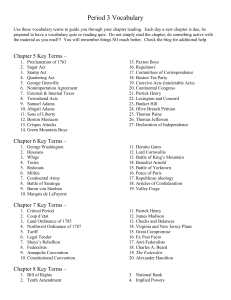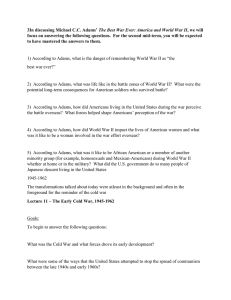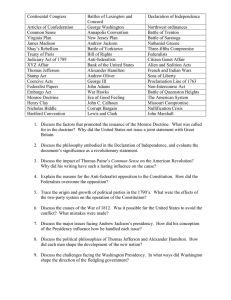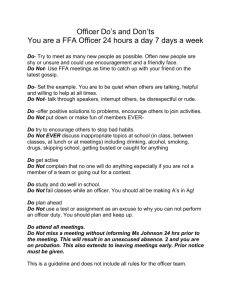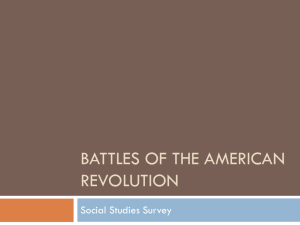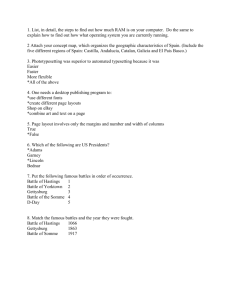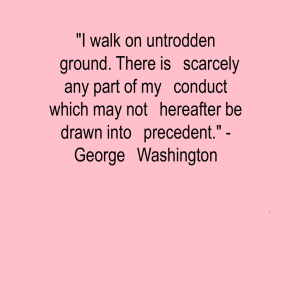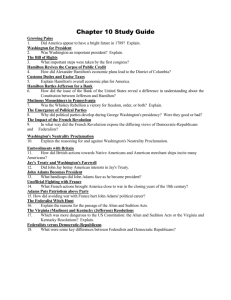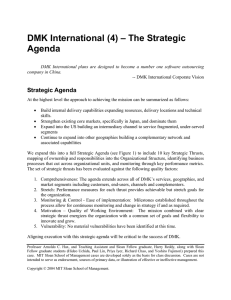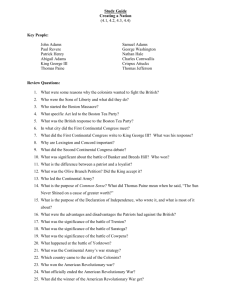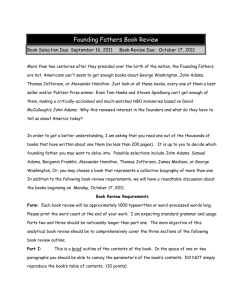Lesson Plan Tuesday 12-15
advertisement
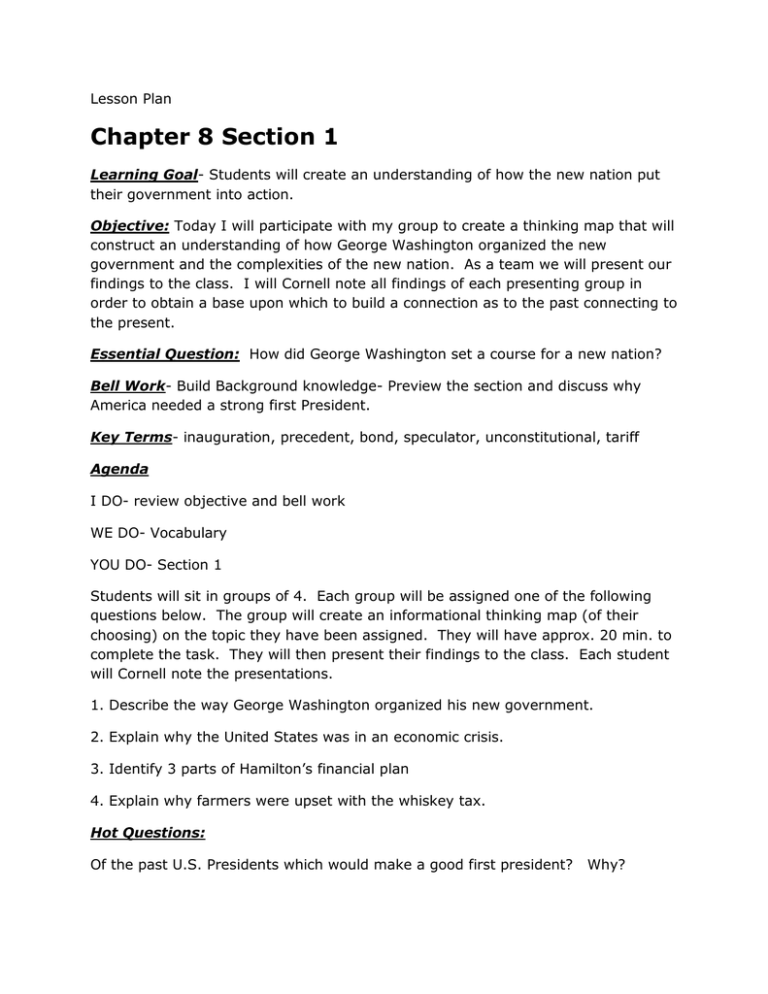
Lesson Plan Chapter 8 Section 1 Learning Goal- Students will create an understanding of how the new nation put their government into action. Objective: Today I will participate with my group to create a thinking map that will construct an understanding of how George Washington organized the new government and the complexities of the new nation. As a team we will present our findings to the class. I will Cornell note all findings of each presenting group in order to obtain a base upon which to build a connection as to the past connecting to the present. Essential Question: How did George Washington set a course for a new nation? Bell Work- Build Background knowledge- Preview the section and discuss why America needed a strong first President. Key Terms- inauguration, precedent, bond, speculator, unconstitutional, tariff Agenda I DO- review objective and bell work WE DO- Vocabulary YOU DO- Section 1 Students will sit in groups of 4. Each group will be assigned one of the following questions below. The group will create an informational thinking map (of their choosing) on the topic they have been assigned. They will have approx. 20 min. to complete the task. They will then present their findings to the class. Each student will Cornell note the presentations. 1. Describe the way George Washington organized his new government. 2. Explain why the United States was in an economic crisis. 3. Identify 3 parts of Hamilton’s financial plan 4. Explain why farmers were upset with the whiskey tax. Hot Questions: Of the past U.S. Presidents which would make a good first president? Why? Standards: Unit 5 SS.8.A.3.3 Recognize the contributions of the Founding Fathers (John Adams, Sam Adams, Benjamin Franklin, John Hancock, Alexander Hamilton, Thomas Jefferson, James Madison, George Mason, George Washington) during American Revolutionary efforts. Examples may also include, but are not limited to, Thomas Paine, John Jay, Peter Salem. 2015-2016 Curriculum Blueprint Grade: 8 Course Descriptions: American History & Career Planning Unit 5: American Government Approximate Time: 15 Days 8th Grade Draft | March 2015 SS.8.A.3.6 Examine the causes, course, and consequences of the American Revolution. Examples may include, but are not limited to, Battles of Lexington and Concord, Common Sense, Second Continental Congress, Battle of Bunker Hill, Battle of Cowpens, Battle of Trenton, Olive Branch Petition, Declaration of Independence, winter at Valley Forge, Battles of Saratoga and Yorktown, Treaty of Paris. SS.8.A.3.9 Evaluate the structure, strengths, and weaknesses of the Articles of Confederation and its aspects that led to the Constitutional Convention. SS.8.A.3.10 Examine the course and consequences of the Constitutional Convention (New Jersey Plan, Virginia Plan, Great Compromise, Three-Fifths Compromise, compromises regarding taxation and slave trade, Electoral College, state vs. federal power, empowering a president). SS.8.A.3.11 Analyze support and opposition (Federalists, Federalist papers, Antifederalists, Bill of Rights) to ratification of the U.S. Constitution. SS.8.A.3.12 Examine the influences of George Washington’s presidency in the formation of the new nation. Examples may include, but are not limited to, personal motivations, military experience, political influence, establishing Washington, D.C. as the nation's capital, rise of the party system, setting of precedents (e.g., the Cabinet), Farewell Address. SS.8.A.3.13 Explain major domestic and international economic, military, political, and socio-cultural events of John Adams’ presidency. Examples may include, but are not limited to, XYZ Affairs, Alien and Sedition Acts, Land Act of 1800, the quasi-war, the Midnight Judges. SS.8.A.3.15 Examine this time period (1763- 1815) from the perspective of historically underrepresented groups (children, indentured servants, Native Americans, slaves, women, working class). SS.8.A.3.16 Examine key events in Florida history as each impacts this era of American history. Examples may include, but are not limited to, Treaty of Paris, British
